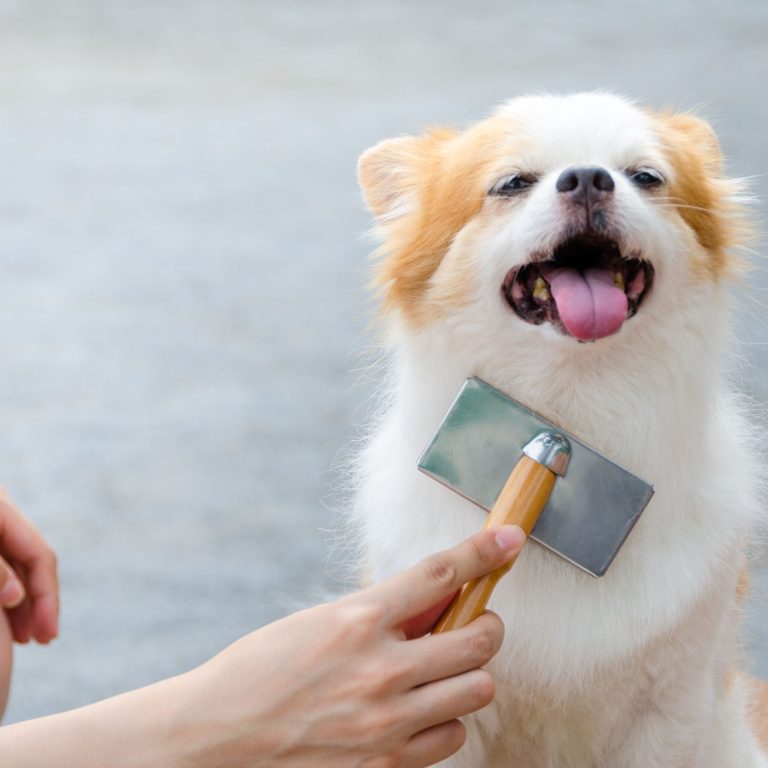Unlocking Playtime Bliss: Best Interactive Cat Toys for Anxious Cats
Understanding Anxious Cats
If you have a cat that experiences anxiety, understanding the signs and the importance of play in their lives can help you provide them with the necessary support and comfort.
Signs of Anxiety in Cats
Anxiety in cats can manifest in various ways and it’s important to be able to recognize the signs. Some common signs of anxiety in cats include:
- Excessive hiding: Anxious cats may seek out hiding spots more frequently, trying to find a safe space away from perceived threats.
- Aggression: Cats experiencing anxiety may display aggressive behavior towards people or other animals, as a defense mechanism.
- Excessive grooming: Over-grooming, resulting in hair loss or skin irritation, can be a sign of anxiety in cats.
- Excessive vocalization: Cats may meow excessively or make other vocalizations when they are feeling anxious or stressed.
- Changes in appetite: Some cats may experience changes in their eating habits when they are anxious, either eating more or less than usual.
- Avoidance behavior: Anxious cats may avoid certain situations or people, displaying avoidance behavior as a way to cope with their anxiety.
If you notice any of these signs in your cat, it’s important to consult with a veterinarian to rule out any underlying medical conditions and discuss appropriate strategies to manage their anxiety.
The Importance of Play for Anxious Cats
Playtime is not only a fun activity for cats, but it also serves as an essential tool for reducing anxiety and promoting their overall well-being. Engaging in play provides mental and physical stimulation, helping to distract anxious cats from their worries and redirect their energy in a positive way.
Interactive play with appropriate toys can provide an outlet for your cat’s natural hunting instincts and offer a sense of control and accomplishment. When cats engage in play, they release pent-up energy and stimulate their minds, which can help to reduce anxiety levels.
By providing your anxious cat with interactive toys, you can encourage them to engage in play and provide an outlet for their nervous energy. These toys are designed to stimulate their natural instincts and keep them mentally and physically engaged. Check out our article on interactive toys for anxious cats for more ideas on toys that can help reduce anxiety in your cat.
Understanding the signs of anxiety in cats and recognizing the importance of play in their lives will enable you to support and provide them with the necessary tools for a happier and more relaxed existence.
Benefits of Interactive Toys
Interactive toys play a crucial role in providing enrichment and relief for anxious cats. These toys offer various benefits that help alleviate anxiety and improve their overall well-being.
How Interactive Toys Help Anxious Cats
Interactive toys provide a much-needed outlet for anxious cats, allowing them to redirect their nervous energy in a positive way. These toys engage cats both mentally and physically, helping to reduce stress and anxiety levels.
By encouraging play, interactive toys help anxious cats release pent-up energy and frustration. The act of playing stimulates the production of endorphins, which are natural feel-good hormones that promote relaxation and a sense of happiness. This helps to create a positive association with playtime, diverting their attention away from anxiety-inducing triggers.
Stimulating Mental and Physical Engagement
Interactive toys offer mental stimulation for anxious cats, which is important for their overall cognitive health. Many of these toys incorporate puzzle-solving elements that require cats to use their problem-solving skills, keeping their minds active and engaged. This mental engagement helps distract cats from their anxious thoughts and redirects their focus to the interactive toy.
In addition to mental stimulation, interactive toys also provide much-needed physical exercise for anxious cats. Engaging in play helps them burn off excess energy and calories, which can contribute to a calmer and more relaxed state. Regular physical activity can also improve their overall fitness and help maintain a healthy weight.
To further understand the benefits of interactive toys and explore specific options for anxious cats, check out our article on anxiety-reducing toys for cats.
By incorporating interactive toys into their daily routine, you can help provide your anxious cat with a sense of comfort, engagement, and relief. Remember to observe your cat’s preferences and interests, and choose toys that cater to their individual needs. With time and positive reinforcement, interactive toys can become an essential tool in reducing anxiety and promoting a happier, more fulfilled life for your feline friend.
Types of Interactive Toys
When it comes to providing enrichment and reducing anxiety in cats, interactive toys are a fantastic solution. These toys engage your feline friend both mentally and physically, helping to alleviate stress and keep them entertained. Let’s explore some popular types of interactive toys for anxious cats:
Puzzle Toys
Puzzle toys are designed to challenge your cat’s problem-solving skills and provide mental stimulation. These toys typically have hidden compartments or mechanisms that require your cat to figure out how to access treats or toys. The interactive nature of puzzle toys helps redirect your cat’s focus, offering a positive outlet for their anxiety. These toys come in various shapes and designs, ensuring there’s a puzzle toy that suits your cat’s preferences and abilities.
Treat Dispensing Toys
Treat dispensing toys are a great way to keep your anxious cat engaged and rewarded. These toys are typically hollow and have openings or compartments that dispense treats when manipulated. By encouraging your cat to work for their treats, these toys provide mental stimulation and a sense of accomplishment. Treat dispensing toys can also help slow down your cat’s eating, promoting healthier eating habits. Remember to choose treats that are appropriate for your cat’s dietary needs and consult with your veterinarian if you have any concerns.
Wand Toys
Wand toys are interactive toys that require your active participation. They consist of a long wand with a string or an attached toy at the end. By moving the wand and mimicking the movements of prey, you can engage your cat in a playful and interactive session. Wand toys allow you to control the level of activity, making them suitable for both high-energy cats and cats with low activity levels. Ensure that you supervise your cat during wand play to prevent any accidental ingestion of small parts.
Electronic Toys
Electronic toys can be a great source of entertainment for anxious cats, especially when their owners are not available for playtime. These toys often feature unpredictable movements, lights, and sounds to captivate your cat’s attention. Some electronic toys have built-in timers or motion sensors, ensuring they activate and engage your cat even when you’re not at home. It’s important to choose electronic toys with sturdy construction and non-toxic materials to ensure your cat’s safety.
By providing your anxious cat with a variety of interactive toys, you can help redirect their focus and provide mental and physical stimulation. Remember to observe your cat’s preferences and interests when choosing toys and rotate them regularly to keep the playtime experience fresh and exciting. For more information on anxiety-reducing toys for cats, visit our article on anxiety-reducing toys for cats.
Choosing the Right Interactive Toy
When it comes to selecting the perfect interactive toy for your anxious cat, there are a few factors to consider. Safety considerations and understanding your cat’s preferences and interests play a significant role in finding an interactive toy that will provide playtime bliss for your feline friend.
Safety Considerations
When choosing an interactive toy for your anxious cat, it’s essential to prioritize their safety. Here are some key safety considerations to keep in mind:
- Size and Durability: Select toys that are an appropriate size for your cat and made from durable materials. This helps prevent choking hazards or the toy breaking apart during play.
- Non-Toxic Materials: Ensure that the toy is made from non-toxic materials to prevent any harm to your cat if they chew or ingest parts of the toy.
- Secure Components: Check that all components, such as bells, feathers, or strings, are securely attached to the toy. Loose parts can pose a risk if your cat tries to swallow them.
- Supervision: Always supervise your cat during playtime, especially with toys that have small parts or long cords. This allows you to intervene if any potential hazards arise.
Remember, every cat is unique, and what may be safe for one cat may not be suitable for another. Pay attention to your cat’s behavior and play style to ensure the toy is safe and enjoyable for them.
Cat’s Preferences and Interests
Understanding your cat’s preferences and interests is crucial in selecting an interactive toy that they will truly enjoy. Here are some factors to consider:
- Play Style: Observe how your cat likes to play. Some cats may prefer toys they can chase and pounce on, while others may enjoy toys they can bat or wrestle with. Consider your cat’s preferred play style when choosing a toy.
- Texture and Material: Cats have different preferences when it comes to toy textures and materials. Some may prefer soft plush toys, while others may enjoy toys with crinkly or crunchy textures. Experiment with different options to see what your cat responds to best.
- Scent and Sound: Some cats are enticed by toys that emit sounds or have enticing scents. Toys with built-in catnip or toys that make crinkling or rattling sounds can be particularly appealing to certain cats.
- Variety: Cats can get bored easily, so it’s important to provide a variety of toys to keep them engaged and entertained. Rotate their toys regularly to maintain their interest and prevent them from losing enthusiasm.
By considering your cat’s safety and preferences, you can confidently choose the right interactive toy that will bring joy and alleviate anxiety. Remember, interactive toys are just one part of a comprehensive approach to improving your cat’s well-being. If you’re interested in learning about other anxiety-reducing strategies for cats, check out our article on anxiety-reducing toys for cats.
Introducing Interactive Toys to Anxious Cats
When introducing interactive toys to your anxious cat, it’s important to take a gradual and patient approach. This will help your cat feel comfortable and build a positive association with the toys. Here are some steps to follow for a successful introduction:
Gradual Introduction
Start by placing the interactive toy in an area where your cat feels safe and relaxed, such as their favorite resting spot. Allow your cat to approach the toy at their own pace and explore it without any pressure. You can even sprinkle some catnip or treats near the toy to attract their attention.
Over time, gradually increase your cat’s exposure to the toy. Move it closer to their play area or incorporate it into their playtime routine. This gradual approach will help your cat feel more comfortable and gradually build curiosity and interest in the toy.
Positive Reinforcement
Encourage your cat’s interaction with the interactive toy by using positive reinforcement. When your cat shows interest in the toy or plays with it, reward them with praise, treats, or their favorite treats. This positive reinforcement will create a positive association with the toy and motivate your cat to engage with it further.
It’s important to note that every cat is unique, and their preferences may vary. Observe their reactions and adjust your approach accordingly. Some cats may take to the toy immediately, while others may require more time and patience. Remember, the goal is to create a stress-free and enjoyable play experience for your cat.
Monitoring and Supervision
While interactive toys can provide mental and physical stimulation for your anxious cat, it’s essential to monitor their playtime and supervise them, especially during the initial stages of introduction. This ensures their safety and prevents any potential accidents or ingestion of small parts.
Regularly inspect the toy for any signs of wear and tear. If you notice any damage, discard or repair the toy accordingly. Always follow the manufacturer’s instructions for the safe use of the toy and prioritize your cat’s well-being.
By following these steps, you can help your anxious cat gradually adapt to and enjoy interactive toys. Remember to be patient, observe their reactions, and provide positive reinforcement to create a positive association with the toys. For more information on anxiety-reducing toys for cats, check out our article on anxiety-reducing toys for cats.







